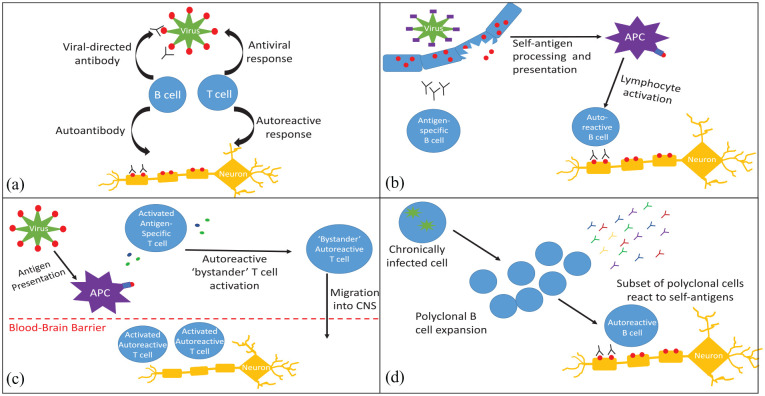Figure 1.
Mechanisms for loss of immune tolerance. (a) Molecular mimicry: an antigen present on a pathogen has a homologous structure to a self-antigen, resulting in loss of immune tolerance and inflammatory response to host antigens. (b) Epitope spreading: the initial response to acute infection is highly specific, but can broaden to other epitopes on the pathogen. This may eventually include self-antigens, resulting in autoreactive lymphocyte activation and autoimmunity. (c) Bystander activation: in response to an infectious pathogen, APCs, cytotoxic T Cells and helper T cells produce inflammatory mediators, which can activate autoreactive lymphocytes. Systemic inflammation can also cause blood-brain barrier disruption, granting autoreactive lymphocytes access to the CNS. (d) Persistent infection and polyclonal expansion: chronic infections, such as Epstein–Barr virus, may cause polyclonal B-cell expansion. A subset of these B cells may produce antibodies that react to self-antigens.
APC, antigen presenting cell; CNS, central nervous system.

